- Author: Denise Godbout-Avant

What are Mushrooms?
Mushrooms, also known as toadstools, are the visible reproductive body of a fungus which produces spores. Mushrooms seem to magically appear and then quickly disappear. The fruiting body you see releases its spores to be spread by air currents, with the mushroom then drying up. When spores land in a satisfactory location they will germinate, sending out long filaments called hyphae.
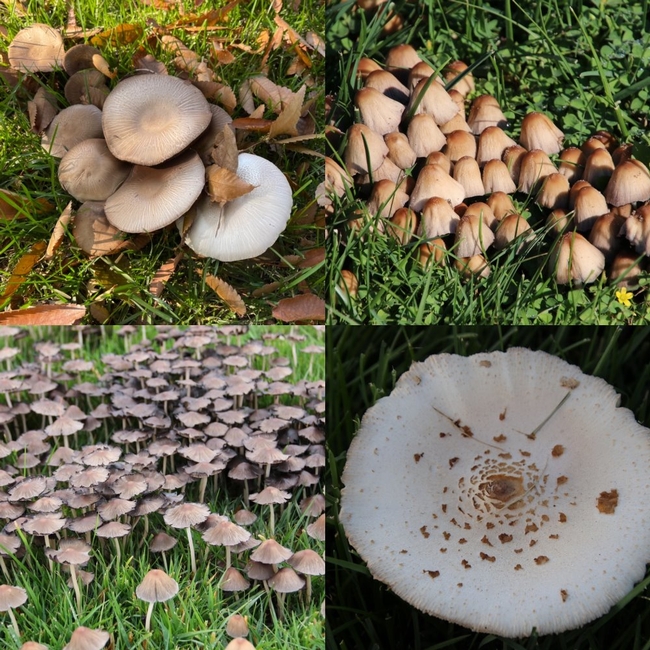
The standard visible morphology of a mushroom is a stipe (stem) topped by a cap with gills on the underside, but mushrooms come in a variety of sizes, shapes, colors and uses. The common mushroom is the cultivated white button mushroom we see in stores. Other shapes include puffball, stinkhorn, morel, bolete, shelf, truffles, bird's nests, orange peel, and agarics. Colors vary from white, black, brown, yellow, and occasionally orange and reds. Sizes range from microscopic to 5 feet in diameter!
Many mushrooms also have an underground filament called mycelium (plural: mycelia). You can sometimes see mycelia when turning over a rotting log or by digging underneath a cluster of mushrooms. The mycelia will look like a stringy mat of white fibers in and around plant and tree roots.
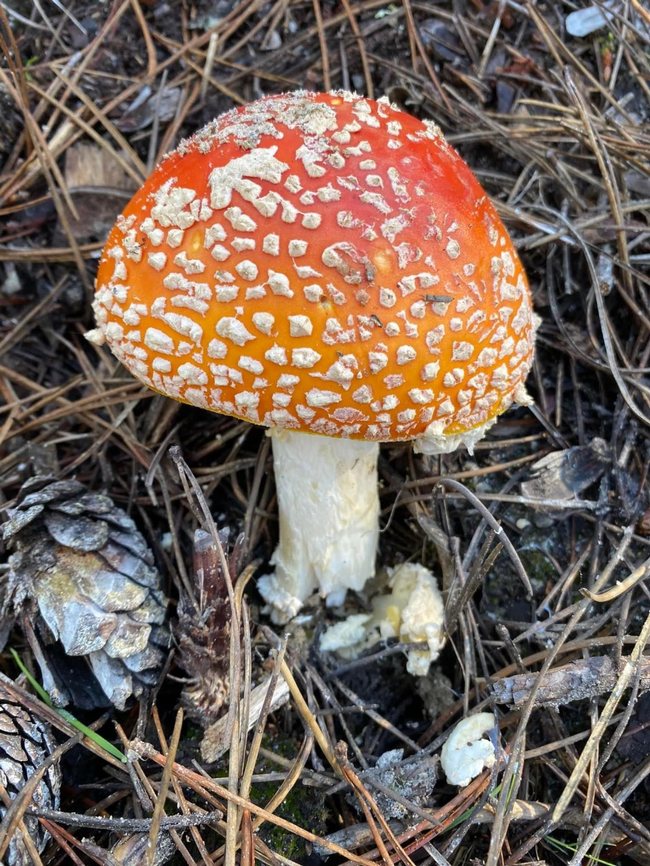
History & Uses
The terms “mushroom” and “toadstool” go back centuries. Much of their mystery is due to their association with poisonings and accidental deaths. They were thought to be special and supernatural by many cultures including Egyptians and Romans who associated them with their rulers and gods. Chinese and Japanese cultures have utilized mushrooms for medicinal purposes for thousands of years. Hallucinogenic mushroom species have a history of use among Indigenous people of Mesoamerica for religious purposes and healing from pre-Columbian times. People today correlate hallucinogenic mushrooms with the hippie period in the 1960s. Edible mushroom species have been found in 13,000-year-old archaeological sites in Chile. Truffles have been collected as far back as 1600 BC.
Edible Mushrooms
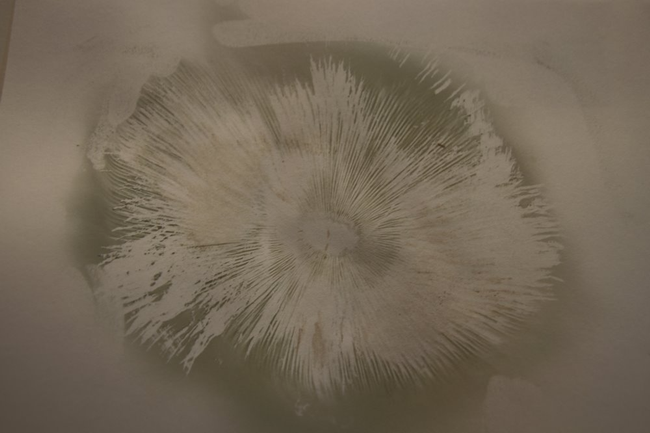
Poisonous mushrooms can be very hard to identify in the wild, so unless you have been taught how to classify mushrooms by an expert, it is recommended you buy from a reliable grocery store. Mycologists identify mushrooms by observing their morphology, getting spore prints, microscopic study, and with mushroom keys, though applying DNA technology is becoming common.
You can also grow your own mushrooms at home – kits are available online and at some plant nurseries.
Mushrooms in Your Garden and Lawn
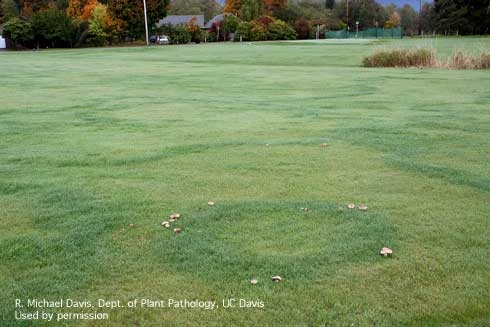
- Common mushrooms in gardens include inky caps, stinkhorns, puffballs, or bird's nests.
- A “fairy ring” of mushrooms is an arc of mushrooms around a circle of darker green lawn, often in shady areas. They get their name from an ancient belief that fairies danced in these circles around the mushrooms.
- Mushrooms in lawns often develop from buried scraps such as pieces of wood or dead tree roots.
- A cluster of honey-colored mushrooms may appear at the base of a tree in the fall. These don't usually appear unless the host tree is dying.
- New lawns require frequent irrigation until established, thus creating a perfect setting for mushrooms, which is why they often appear in freshly planted lawns.
Remember, the mushrooms you see are the fruiting bodies that produce spores. Thus, removing them will not kill the underground mycelia from which they are growing, unless you pick them prior to their release of spores. However, you can try to reduce the number of mushrooms you have by decreasing the amount and frequency of watering your lawn and let the grass dry in between. For more information in dealing with mushrooms in your lawn, visit the UC IPM website at http://ipm.ucanr.edu/PMG/PESTNOTES/pn74100.html
Whether you see mushrooms in the forest, in your lawn or neighborhood, I hope you can appreciate and enjoy these unique, complex, beautiful, valuable, diverse, and magical organisms!
-This article was originally published on December 6, 2021.
Denise Godbout-Avant has been a UCCE Stanislaus County Master Gardener since July 2020.
- Author: Ed Perry
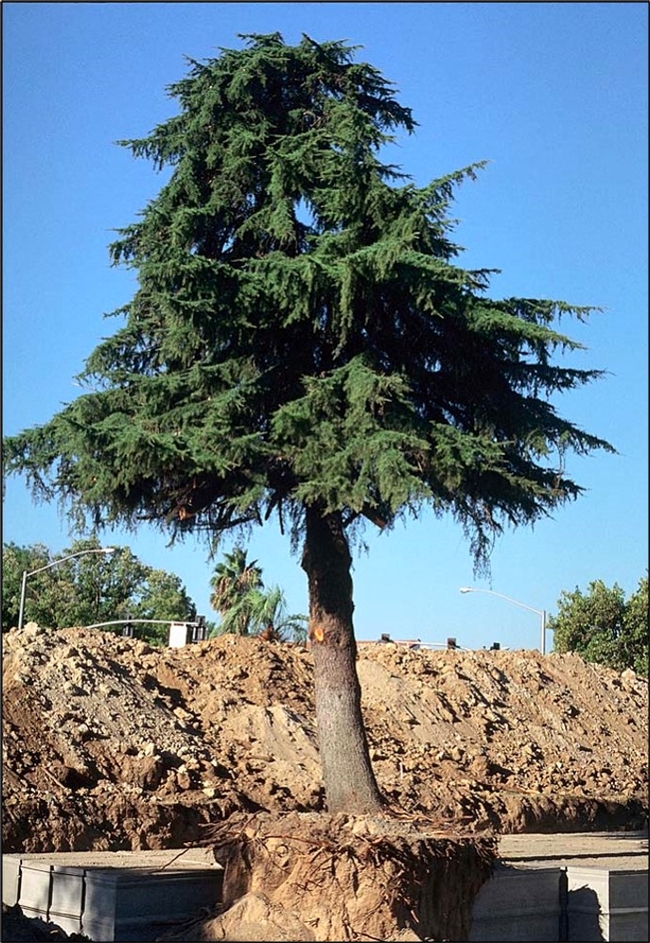
Most mature trees will not show any immediate effects of root cutting, such as wilted leaves or branch dieback, even when a fairly large number of roots are cut. Indeed, root cutting is a routine practice where landscapes are being renovated or sidewalks are being repaired. However, it's the long term effects of root cutting that needs consideration.
Roots can decay when they are attacked by microorganisms, usually fungi, that live in the soil. The microorganisms often infect a root through a wound, but some are able to penetrate a root directly, especially if the tree has been weakened by drought or overwatering. Some root rot fungi can kill a tree before it falls, others cause living and healthy looking trees to fall. You can sometimes see trees blown over with the remains of their decayed root systems still attached.
It is often very difficult to detect rotting roots, since the problem takes place out of sight below ground. Trees infected with root rot fungi sometimes have visible fruiting structures of the fungus, called conks or mushrooms, on the trunk near the ground. If you see such signs on a large tree, consider having the tree inspected by a qualified arborist.
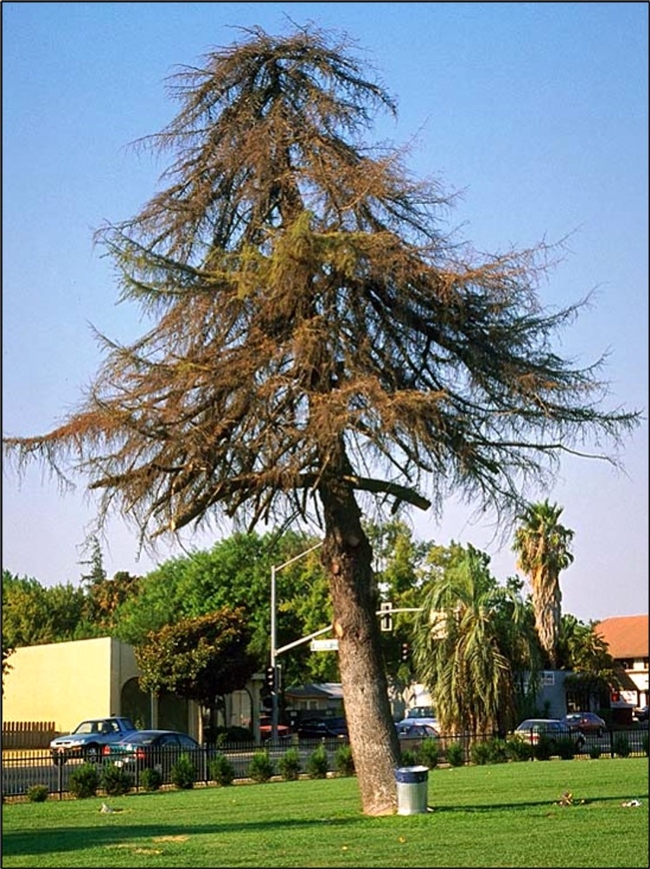
Construction activities or trenching are especially damaging to the roots of nearby trees. Trenching and earth moving equipment used around trees often sever a large portion of the existing tree roots. Without the support of the entire root system, the tree is structurally weakened. The probability of failure increases as a greater amount of the root system is cut or damaged.
It is usually impossible to predict the exact effect that root cutting will have on a particular tree, or when an effect will occur. A tree may fail a few months or many years following root injury, or it may never fail due to the root injury. Tree species vary in their ability to tolerate root disturbances. Also, no two root systems are exactly alike. A tree with a deep, extensive root system will tolerate more disturbance than a neighboring tree with a poorly developed root system. In general, it is important to take every step possible to avoid cutting or damaging a tree's root system.
Despite an occasional failure, most large trees are very safe. Root systems are well designed by nature to hold trees up, regardless of the tree's size. For the most part, they do just that.
Ed Perry is the emeritus Environmental Horticultural Advisor for University of California Cooperative Extension (UCCE) in Stanislaus County where he worked for over 30 years.

